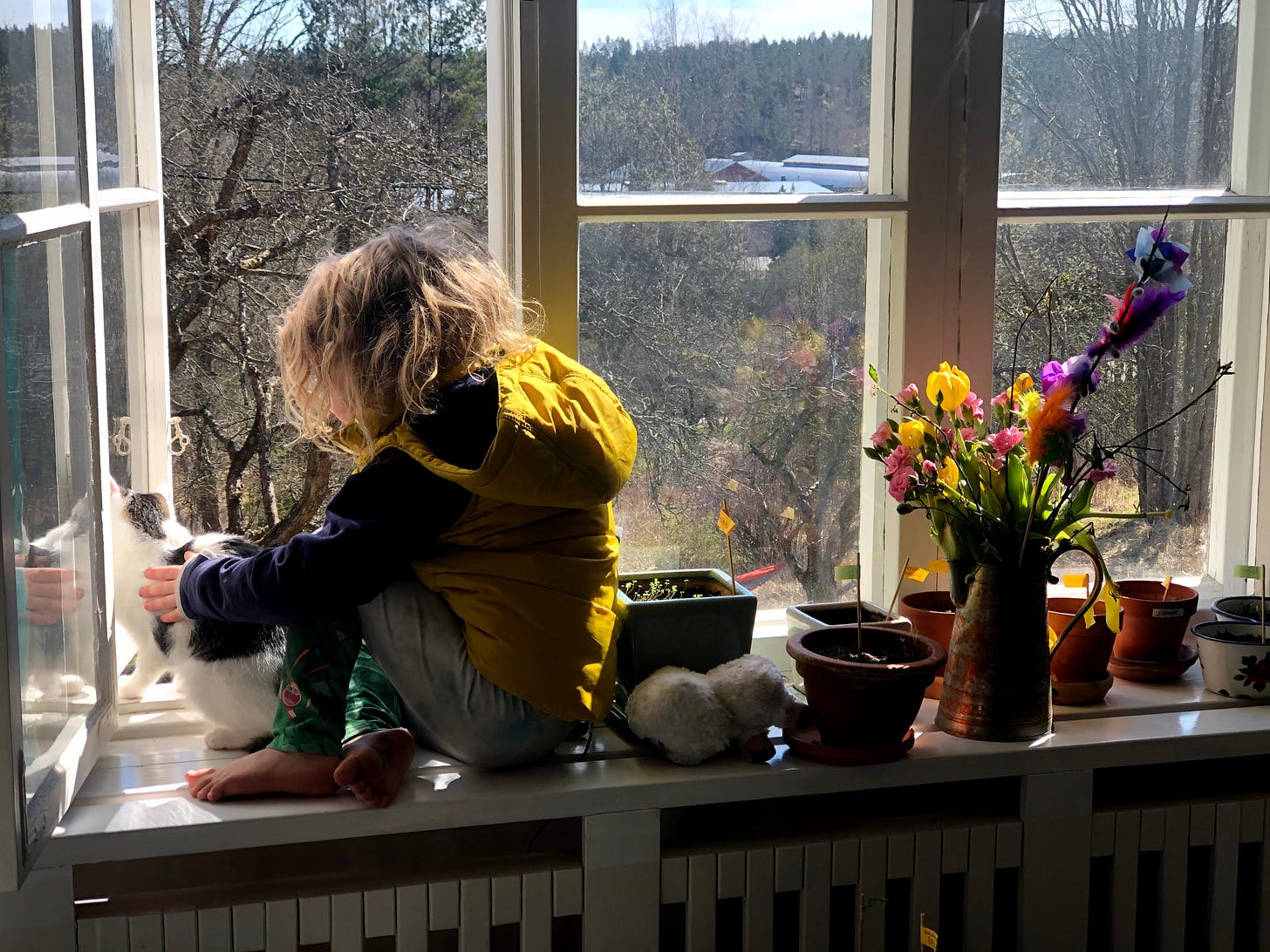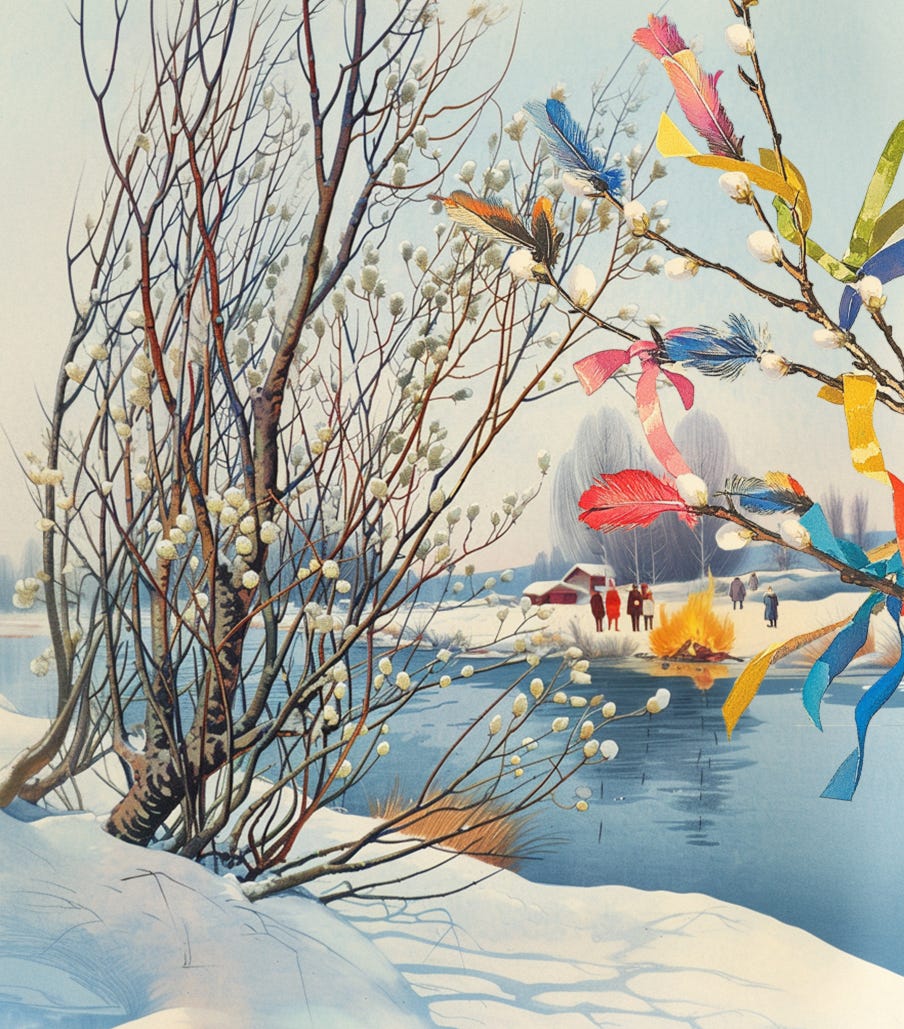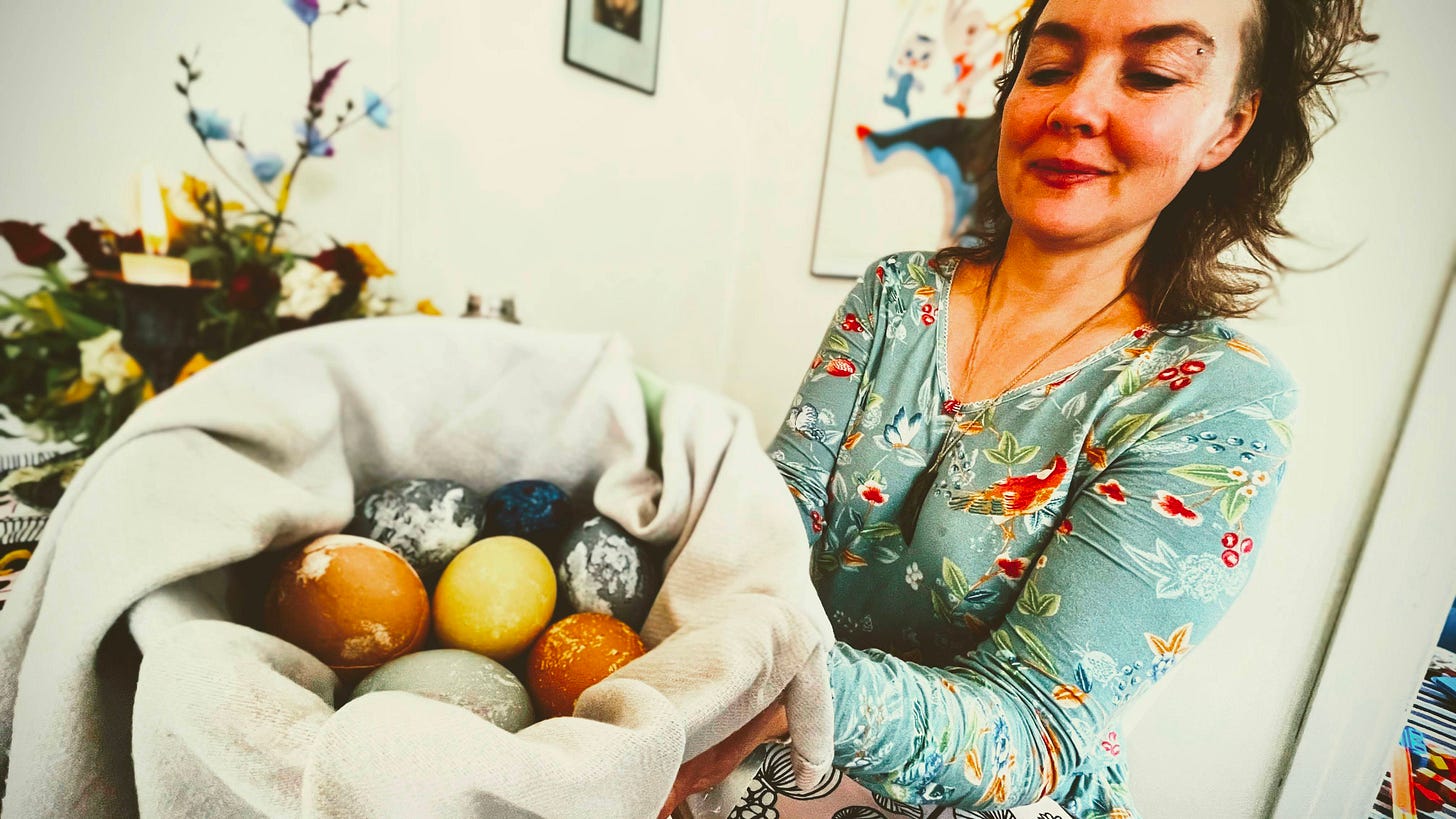The spring sun floods the entire room with light so bright I have to squint and wrinkle my freckled nose to keep from sneezing. The freshly washed windows are adorned with cheerful yellow curtains sewn by my mother. The kitchen table is like an altar: hand-painted eggs, decorative willow branches, yellow candles, and Easter chicks bathe in golden light. Spring has been welcomed.

In my childhood home, seasonal rituals were visible even in our interior decor: our mother would change the curtains, tablecloth, and even the couch cushions according to the time of year. We children had our own role in the spring rituals: as soon as the first signs of spring appeared, it was our job to wade to the edges of snowy fields, collect the prettiest willow branches from the ditches, and decorate them with colorful feathers and silk paper flowers. The branches were placed in vases with tulips or tucked into pots of daffodils. Some stayed at home, others were gifted on Palm Sunday when we dressed up as little witches and went door to door blessing our neighbors in hopes of chocolate eggs.
For us Northerners, the arrival of spring is one of the highlights of the year – the long, cold winter finally begins to loosen its grip, making way for warmth, sunshine, new life, and growth. Whether we live in cities or the countryside, the increasing light affects us as it does all animals and plants in nature.
We can’t help but notice the changes around us: swollen buds, crocuses pushing up from the thawed earth near house walls. Migratory birds return – perhaps from Lintukoto – ‘Birds Home, that mythical, paradise-like land where our ancestors believed the birds spent the winter, flying back north along the Milky Way (called Linnunrata, the Birds Way in Finnish) in spring.
One of the clearest signs of spring is the blooming of the willow: it is the first tree to awaken after winter. Willows are lifelines for early pollinators – they are among the first plants to bloom in spring and provide vital nectar and pollen to bees, bumblebees, and flies just waking from winter dormancy.
To us humans, the soft, furry catkins that line ditches and roadsides bring joy and the promise of life continuing. They make even the most winter-weary wanderer pause, run a hand over their velvety surface, and pick a few branches to bring home.
The Palm Sunday tradition of blessing with willows remains strong in Finland – though nowadays, you might see not only little witches but also Pokémon, skeletons, or other creatures making the rounds. This tradition came to Finland from the east, brought by Russian Karelian Orthodox Christians who would bless willow branches in the Easter service. In Biblical tradition, people greeted Jesus with palm branches as he entered Jerusalem. Since palms don’t grow here – and little else is green at Easter – decorated willow branches took the place of palms.

In the Orthodox tradition, willow branches are blessed in church on Lazarus Saturday, the day before Palm Sunday, during an evening vigil. The priest blesses, censes, and sprinkles holy water on the branches before handing them to the congregation. At home, children decorate them and use them for the Palm Sunday blessing ritual, known as virpominen. The ritual is meant to bless the household, wishing for fertility in the form of children, healthy animals, and abundant harvests. By brushing people or animals with the willow branches, it was believed that the magical power of the willow would transfer to them.
But the healing power of willow is not just myth or tied to Christian tradition – it’s known worldwide and has been used for thousands of years. Written records from China and Egypt show that willow-based remedies were prepared and used as early as 1500 BCE. In Finland, willow bark and tea made from it were used in folk medicine for treating rheumatism, reducing fever, and easing pain and inflammation, thanks to its salicylates – the natural forerunners of aspirin. Willow, then, is well-suited to its folkloric role as a bringer of health and vitality.
Easter is not a randomly selected Sunday but follows the ancient rhythms of celestial bodies: the celebration takes place on the first Sunday after the first full moon following the spring equinox. But if the full moon falls on the night of the equinox, Easter is pushed a month later – sometimes as far as the end of April. The spring equinox, when the Sun’s center crosses from the southern to the northern celestial hemisphere and day and night are of equal length, was one of the main festivals in many ancient cultures. It marked the celebration of fertility gods and goddesses, the Sun, and the beginning of spring after the dark, cold winter.

The English word “Easter” comes from the Germanic spring goddess Ostara and the festival held in her honor. Ostara’s rituals included decorating eggs as fertility symbols, planting seeds to promote growth, and lighting candles to celebrate the return of the sun.
So today’s Easter, with its painted eggs, colorful candles, and decorated willow branches, continues the ancient festival of spring and fertility. And when little witches, Pokémon, and other freckle-nosed children roam the villages with their willow twigs, they unknowingly carry on an age-old ritual of protection and abundance.
Happy Easter! 🐣